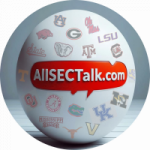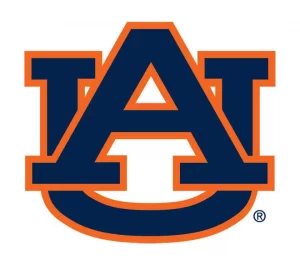
WAR EAGLE!
Auburn University
Location: Auburn, AL
Nickname: Tigers
Type of School: Public Land Grant Research University
Mascot: Live golden eagle, “Aurea”,The tiger is “Aubie”
Total Student Body: 33,885 (Fall 2024)
University Established: 1856
Football Stadium: Jordan-Hare Stadium
Capacity: 88,043
Team Colors: Auburn Orange and Auburn Blue
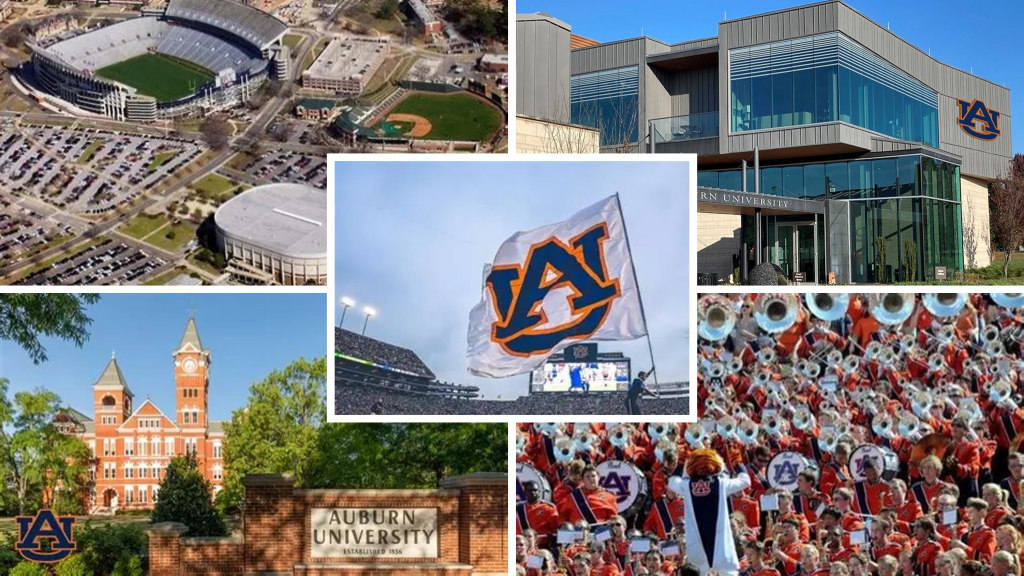
Alma Mater
On the rolling plains of Dixie ‘neath the sun-kissed sky,
Proudly stands our Alma Mater, banners high.
To thy name we’ll sing the praise, from hearts that love so true,
And pledge to thee our loyalty the ages through.
We hail thee, Auburn, and we vow to work for thy just fame,
And hold in memory as we do now thy cherished name.
Traditions
Don't Call Us Eagles!
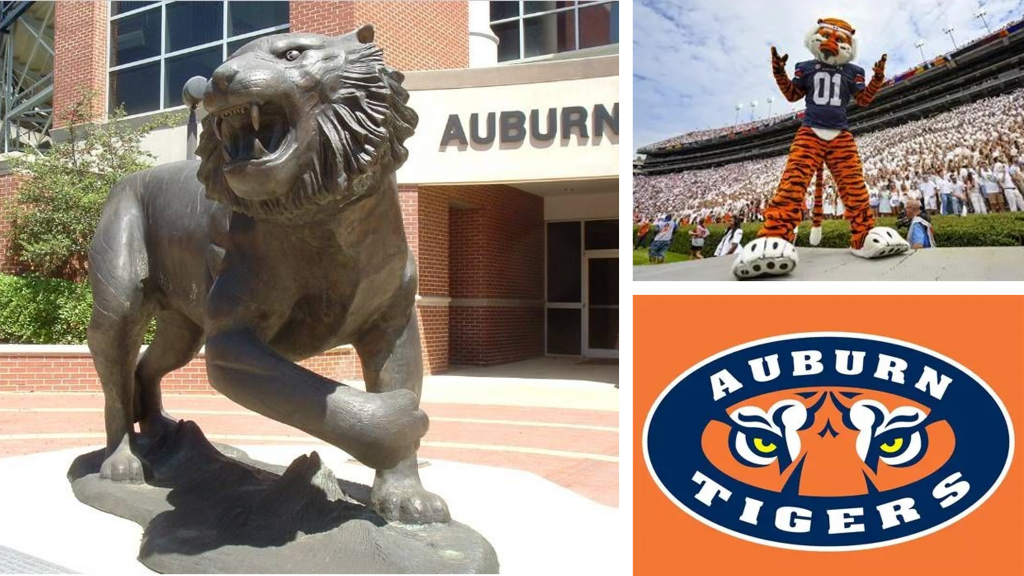
Auburn University’s ONLY nickname is “the Tigers”. They ARE the Auburn Tigers. Auburn has been known as the Tigers since they first fielded a football team in 1892 when they played the Georgia Bulldogs in Atlanta.
The official mascot of Auburn University is “Aubie” the Tiger and all Auburn athletics, both men’s and women’s are called the Tigers.
The name of the town, the university, and the school moniker all come from Oliver Goldsmith’s poem, “The Deserted Village”, published in May 1770.
In 1836, Judge John J. Harper founded the city and chose the name Auburn when inspired by the line, “Sweet Auburn, loveliest village of the plain” and the Tigers nickname came from the line, “Where crouching tigers wait their hapless prey”.
Toomer's Corner
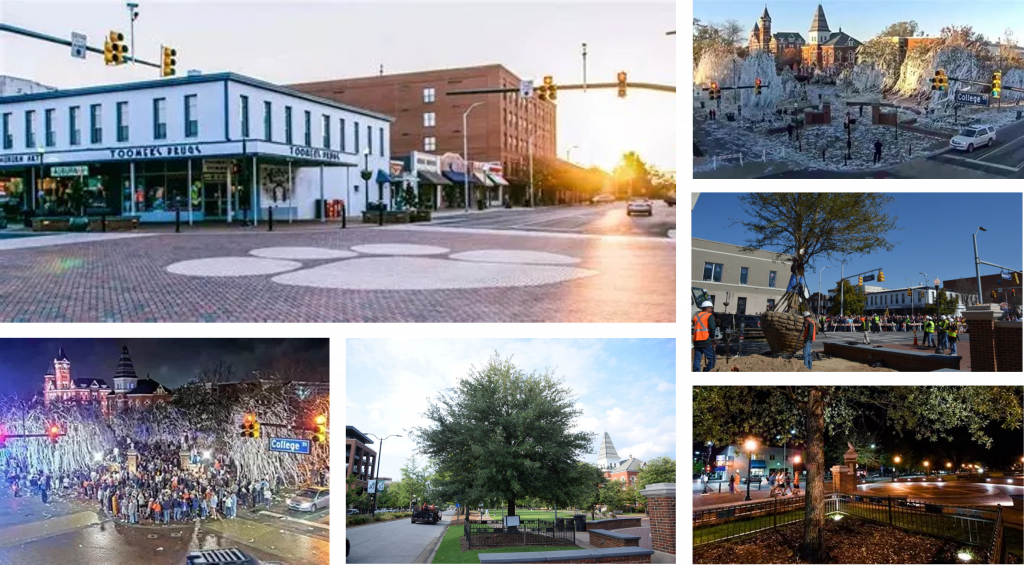
The intersection, which marks the transition from downtown Auburn to the university campus, is known as Toomer’s Corner. It is named after former State Senator “Shel” Toomer (a halfback on Auburn’s first football team in 1892) who founded Toomer’s Drugs in 1896. Toomer’s Drugs is a small business on the corner that has been an Auburn landmark for over 130 years.
The tradition of rolling Toomer’s Corner is said to have begun when Toomer’s Drugs had the only telegraph in the city. During away football games, when employees of the local drug store received news of a win, they would throw the ticker tape from the telegraph onto the power lines.
The beginning of the tradition of throwing toilet paper into the trees, power lines and every other stationary object on the corner is open to debate.
“We celebrated Pat Sullivan winning the Heisman Trophy there in 1971 and no toilet paper was tossed,” said David Housel, Auburn Athletics Director Emeritus. “That started a year later when we celebrated the 17-16 victory over Alabama in the `Punt, Bama, Punt’ game.”
That was the game in which Auburn ran back two punts for touchdowns in the last six minutes. The use of toilet paper was inspired by comments from Terry Henley, a colorful halfback whose rural drawl made him a darling of reporters. The unbeaten Crimson Tide was second in the nation coming into the game and Henley made a pledge: “We’re going to beat the No. 2 out of Alabama.”
Hence the rolls of toilet paper.
War Eagle - A Battle Cry (explained)
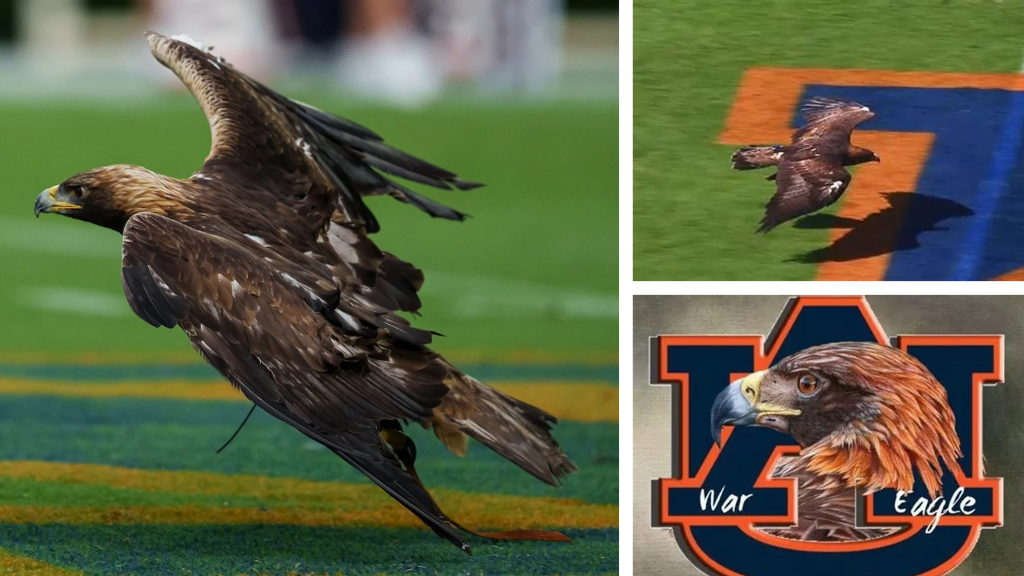
“War Eagle” is Auburn University’s battle cry. The phrase has a long history and deep significance among the Auburn faithful. They use it to greet and identify with each other everywhere!
I’ve read this almost identical account in multiple publications, so for my purposes here, I’m gonna go with it.
The legend about the battle cry goes back to the first time Auburn played Georgia on the football field in 1892 and focuses on a spectator who was a Civil War veteran. In the stands with him, was an eagle the old soldier had found during the war. He had kept it as a pet for almost 30 years.
According to people in the stands nearby, the eagle suddenly broke free of his owner and began majestically circling the playing field. As that eagle soared, Auburn began a steady drive toward the Bulldog end zone for a thrilling victory. Overjoyed at their team’s success and taking the raptor’s presence as an omen of good play, Auburn students and fans began yelling “War Eagle!” to encourage their team.
The War Eagle battle cry has lived on to become a symbol of the proud Auburn spirit. Whenever Auburn people gather, the battle cry “Warrrrrrr Eagle!” is almost certain to be heard.
Since that first War Eagle in 1892, there have been seven others throughout Auburn’s history that have served to keep the legendary battle cry alive.
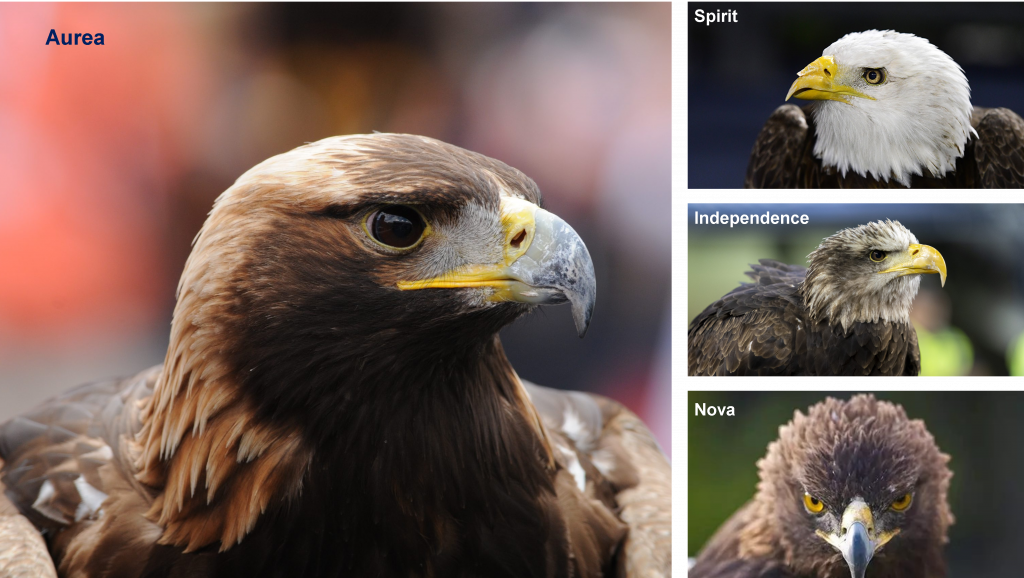
4 "War Eagles" cared for at The Auburn University Raptor Center
Interesting Facts
The Plainsman
The Plainsman is Auburn’s student-run newspaper. Founded in 1893, the newspaper is one of the oldest student-run publications in the United States. The Plainsman covers news and events on campus and has won numerous awards for its reporting. The newspaper is a great way for students to stay informed and get involved in the campus community.
The Flying Tiger
The Flying Tiger is Auburn’s official airplane. The plane was purchased in 1947 and is used for a variety of university-related activities, including recruiting and alumni events. The plane is a symbol of the university and is a source of great pride for the Auburn community.
The Auburn-Clemson Rivalry
The Auburn-Clemson rivalry is one of the most intense rivalries in college football. The rivalry dates back to the late 19th century and has been played annually since the 1940s. The game is a source of great pride for both schools and is one of the most anticipated games of the year.
The Tiger Walk

The Tiger Walk at Auburn University is one of the most imitated traditions in all of college sports.
Each gameday, the Tigers Walk from the Athletics Complex down Donahue Drive to Jordan-Hare Stadium. But the team doesn’t make the walk alone; instead, they are cheered on by the thousands of Auburn fans who line the street and, in the process, create one of the great scenes in college football. The walk begins two hours before each game.
The tradition began in the 1960s when groups of kids would walk up the street to greet the team and get autographs. It has grown to become one of the most treasured of Auburn traditions.
The most famous Tiger Walk took place on December 2, 1989, the day Auburn welcomed Alabama to campus for the first time ever. Previously, the Auburn-Alabama series had only been played at Legion Field in Birmingham.
Auburn officials estimated that 20,000 fans lined Donahue Drive for the Tiger Walk that day.
Trivia
The Plainsman
The Plainsman is Auburn’s student-run newspaper. Founded in 1893, the newspaper is one of the oldest student-run publications in the United States. The Plainsman covers news and events on campus and has won numerous awards for its reporting. The newspaper is a great way for students to stay informed and get involved in the campus community.
The Flying Tiger
The Flying Tiger is Auburn’s official airplane. The plane was purchased in 1947 and is used for a variety of university-related activities, including recruiting and alumni events. The plane is a symbol of the university and is a source of great pride for the Auburn community.
The Auburn-Clemson Rivalry
The Auburn-Clemson rivalry is one of the most intense rivalries in college football. The rivalry dates back to the late 19th century and has been played annually since the 1940s. The game is a source of great pride for both schools and is one of the most anticipated games of the year.
